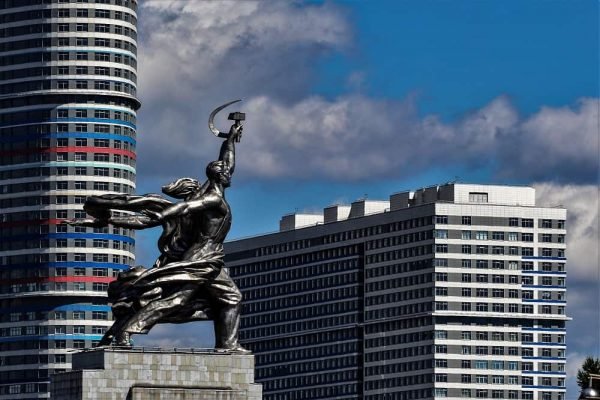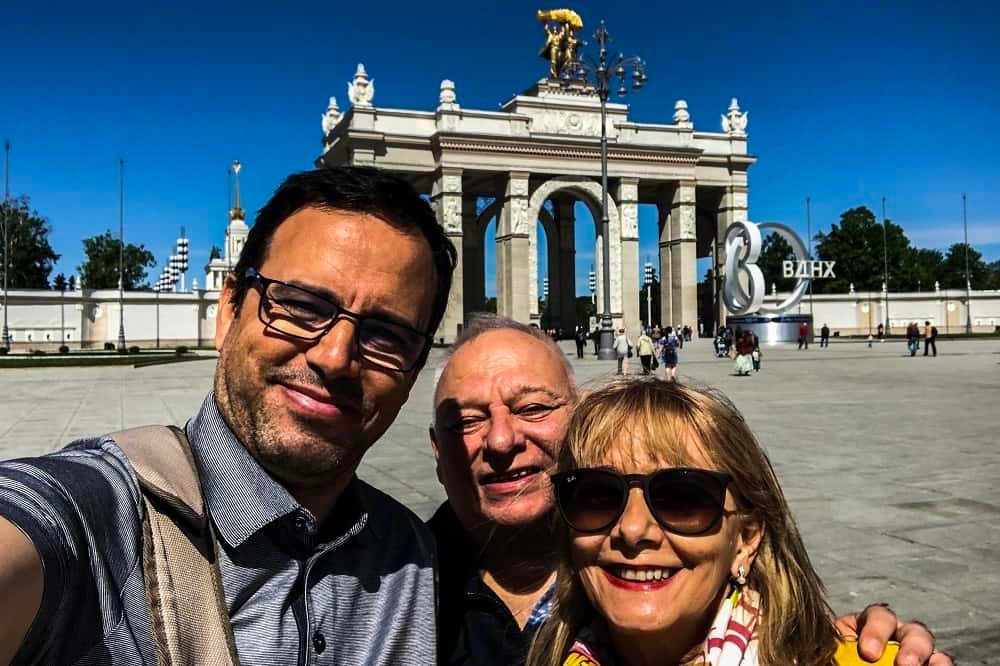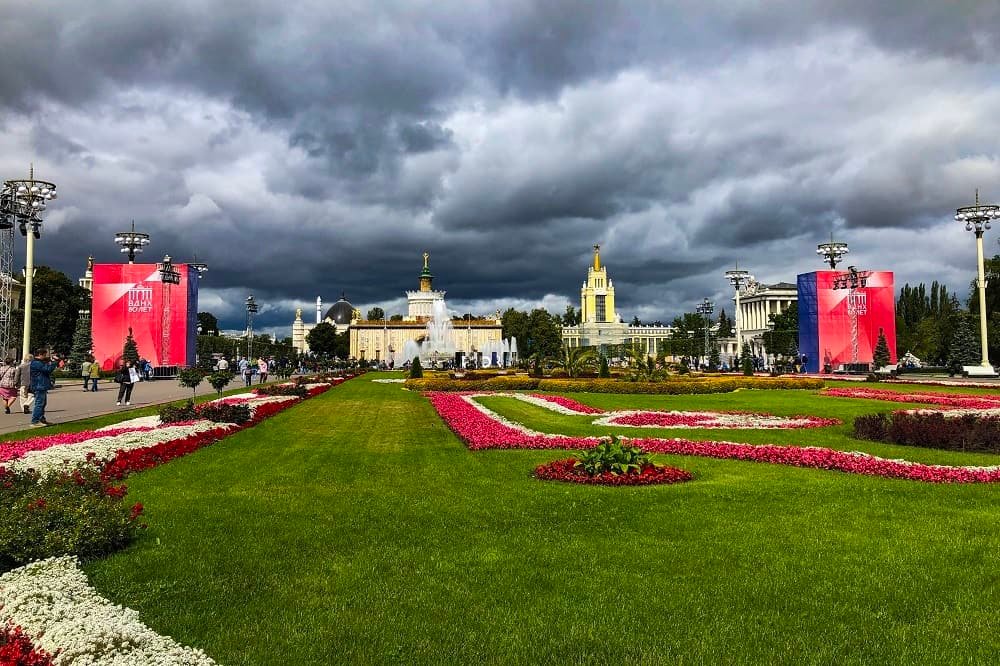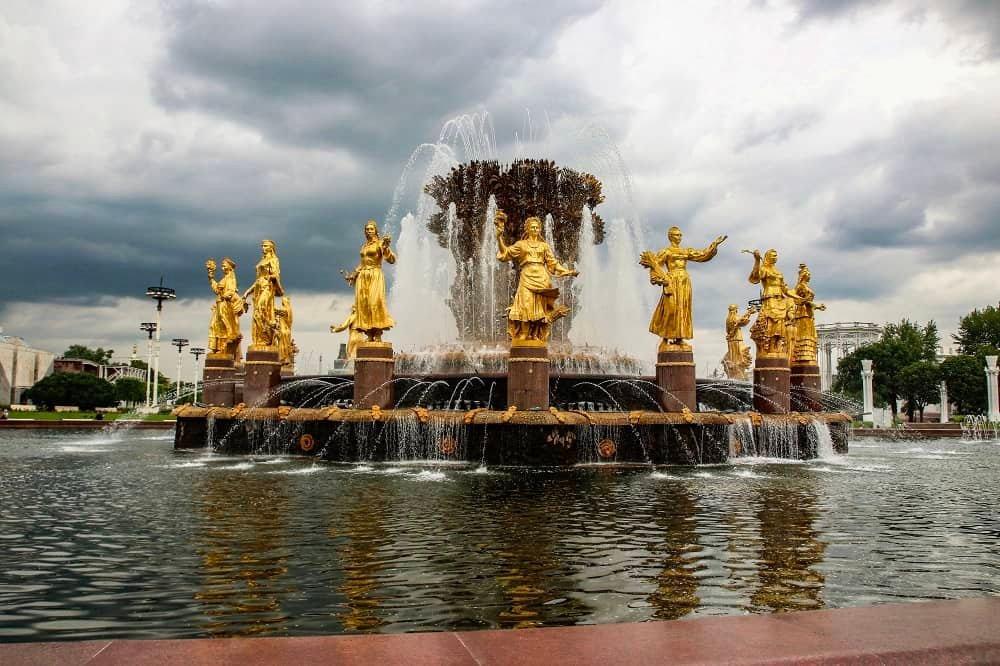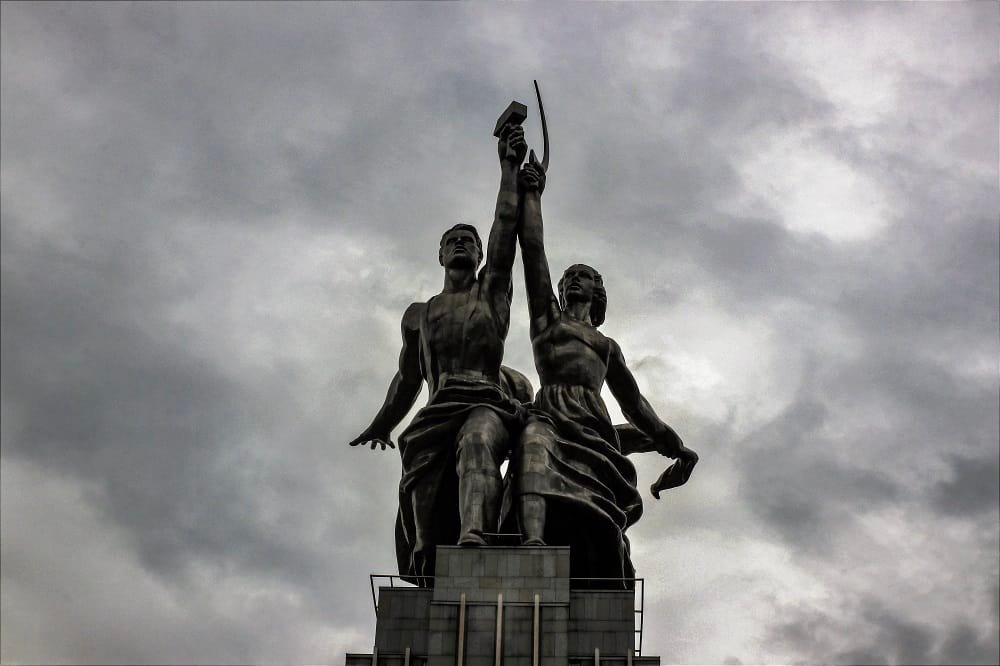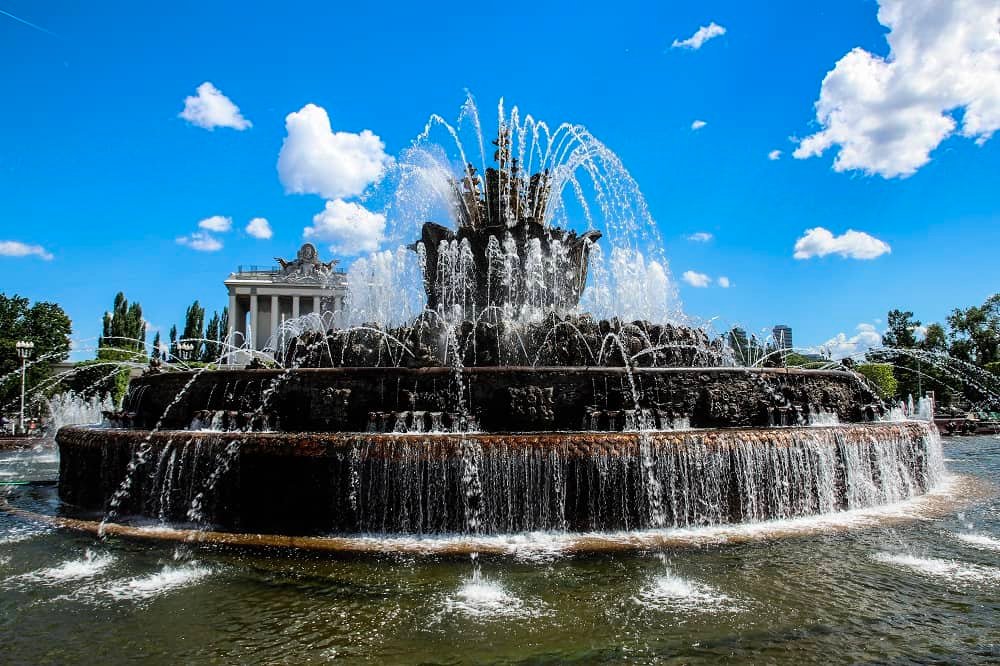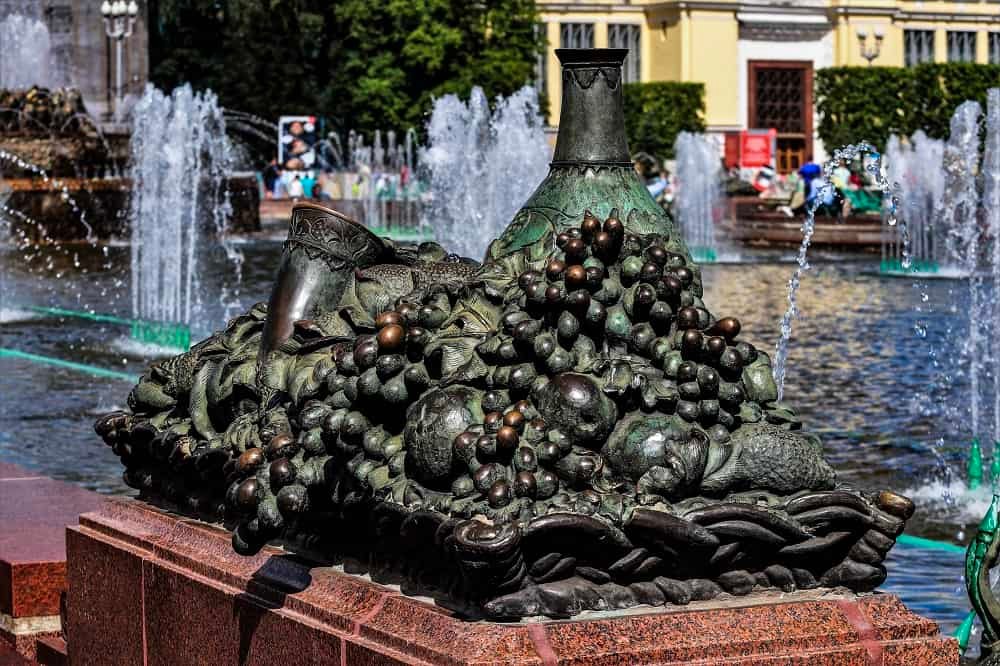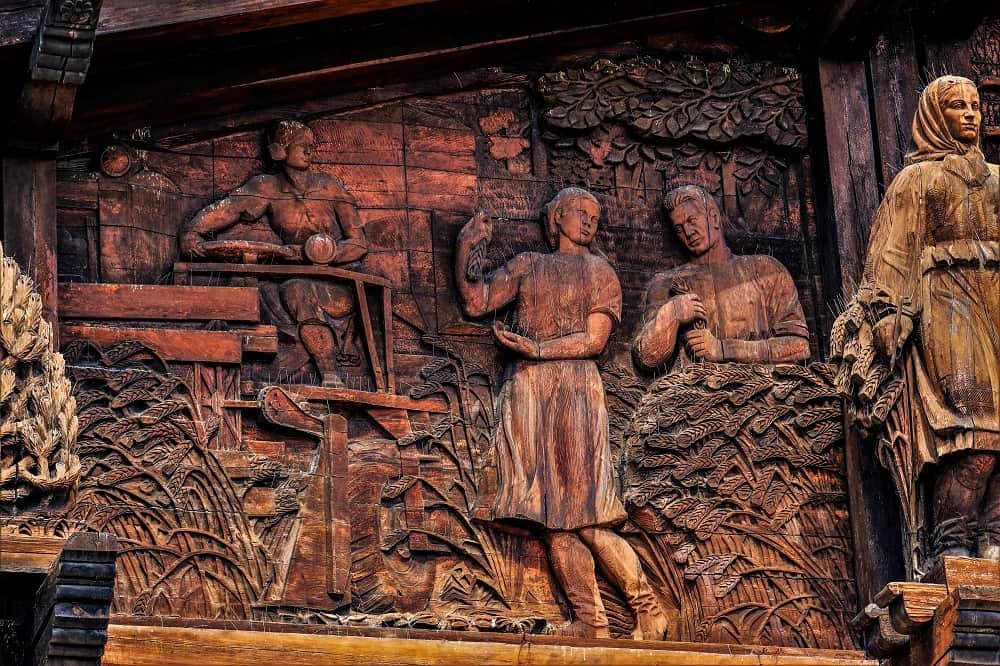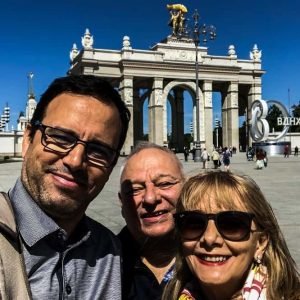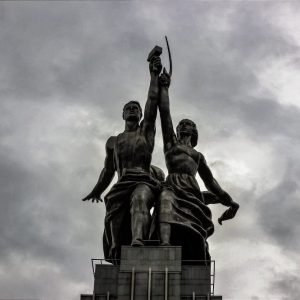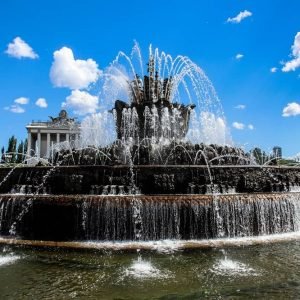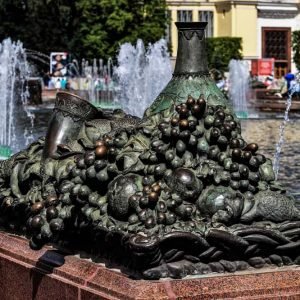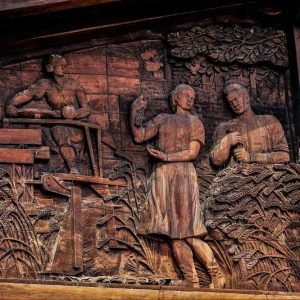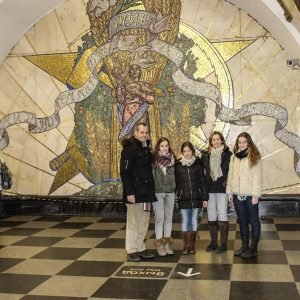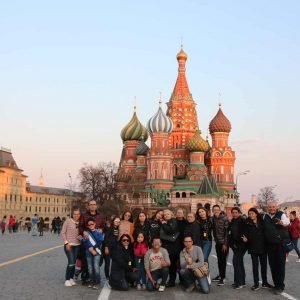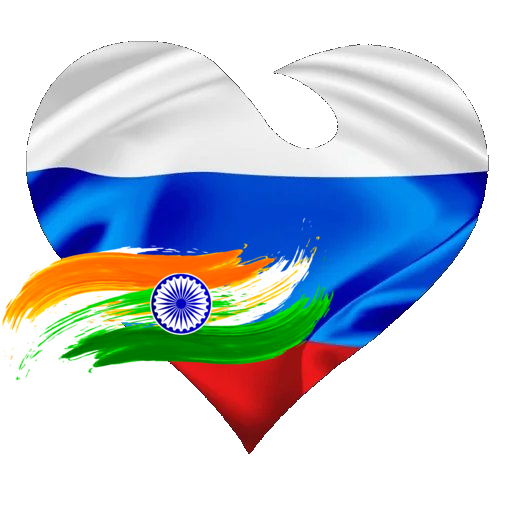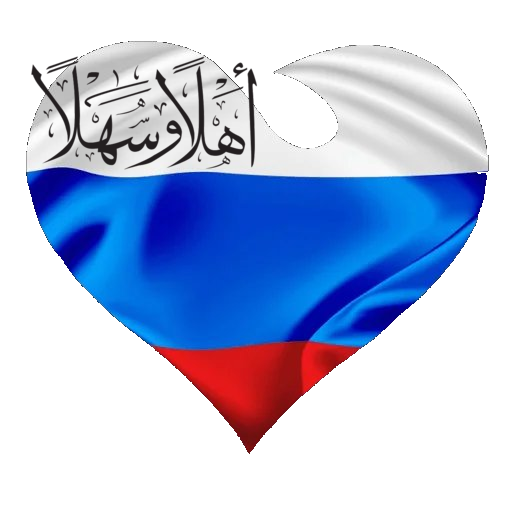VDNKH Park tour in not only a visit to a park. From the early steps of Soviet epoch to its end; the Western world has used all kinds of propaganda available to discredit the socialist or communist system, the Soviet Union has also used the instruments they had available to do the contrary propaganda and try to improve their image outside their territories. Most of their efforts were in vain as the capitalist side had more media’s to reach more countries and territories.
What relation have VDNKH Park with the comments before?
Well, simply on the VDNKH Park tour, the visitor discovers that it is not a simple park, but it is more to present the economic achievements of the Soviet Union in a way studied so that the image is of a self-sufficient system in terms of economy, education, science, energy, agriculture and a myriad of sectors.
The park in addition to the nature part, which is undoubtedly impressive and almost all visitors dedicate half the time for its great beauty, there are more than 60 pavilions that in their summary represent the different republics that make up the Soviet Union and the different sectors of the economy.
Examples of points of interest in VDNKH Park:
- Pavilions of:
- Belarus (Can visit for free)
- Armory (Can visit for free)
- The Space Race (Can visit Paying Tickets)
- Kazakhstan (Can visit for free)
- Culture
- Votok M Replicas – Mig 27 – MI8 Helicopter…
And endless pavilions that make up the park.
But what impresses all visitors (Russians or foreign tourists) are the two fountains; the fountain the friendship of the nations and the fountain of the stones and flowers, no one leaves this park without photos in those amazing fountains.
VDNH: Some Historic Data
The Location of the VDNKH Park
In the northern part of Moscow, exactly in the area called Ostankino, there lived gypsy before the revolution of 1917, the place was considered out of town and marginalized, muddy swamps uninhabitable. But the course of this place and its inhabitants changed in 1934 when NKVD officers forcibly kicked out the gypsy camp established there.
5 years later appeared one of the main cultural places of the capital, which throughout its history attracted tourists from all over the world, is known by the abbreviation VDNKH or exhibition of achievements of the national economy, and later the Exhibition Center of all Russia and the achievements of the national economy, which during its existence was visited by millions of tourists from all over the world..
Why the VDNKH park appeared
The history of the “Main Exhibition of the Country” began with the call of the Second Congress of the entire Union of Collective Farmers to the central organs of the Communist Party and the government with a request to organize the Agricultural Exhibition of the whole Union in Moscow. The application was granted and the Main Exhibition Committee was created.
To obtain the right to participate in the Exhibition, collective farms, state farms, machine and tractor manufacturer, scientific institutions had to have certain indicators for 1937 and 1938, and advanced workers and agricultural organizers by 1938. Thanks to this condition, no agricultural exhibition in the world had such a large number of exhibitors.
Importance of being an exhibitor
The popularity of the Exhibition among agricultural workers was unusually high. Millions of farmers and collective workers from state farms, thousands of agronomists, livestock specialists, machine operators fought for the right to participate. The exhibition committee received about 250,000 requests for the desire to be its exhibitor.
The main exhibition establishes prizes: a thousand first-degree diplomas and four thousand second grades. Companies awarded a first-degree diploma received 10 thousand rubles and a passenger car, while those awarded a second-grade diploma received 5,000 rubles and a motorcycle (We are speaking about year 1939, that sum was a fortune).
One thousand great and two thousand small gold medals, three thousand large and fifteen thousand small silver medals were established for agricultural leaders.
In addition, a Book of Honour was established, where each exhibitor recorded his achievements.
Examples of exhibitions
The All-Union Agricultural Exhibition has also become a kind of contribution to the architecture of the capital. Having grown up on the northern outskirts, an entire exhibition town with an area of 136 hectares included ponds, parks, experimental plots, 250 different buildings.
Crops and plantations, which occupied about 20 hectares, represented agriculture throughout the Soviet Union. About 600 varieties of different crops were planted on a grain plot. The show garden was an incredible image: about 10 thousand plants were planted. Among them, 600 varieties of fruit and berry crops etc…
On the park, visitors could see crops of cotton, rice, beetroot, flax, hemp, tobacco, kenaf, rubber, hops. In total, 260 crops of more than 3,000 varieties were exhibited in open areas.
The architectural ensemble of the All-Union Agricultural Exhibition was created by the architects V. Shchuko, V. Geylfreikh, L. Polyakov, D. Chechulin, sculptors S. Konenkov, GMotovilov; monumentalists A. Deineka, A. Bubnov, P. Sokolov-Skal and many other artists. Under the leadership of chief architect S. Chernyshev, more than two thousand professionals and craftsmen worked.
In addition to these examples of agriculture, we can cite a myriad of exhibitions related to industries, education, energy and much more.
Come and enjoy it with our guides and with the best price.
